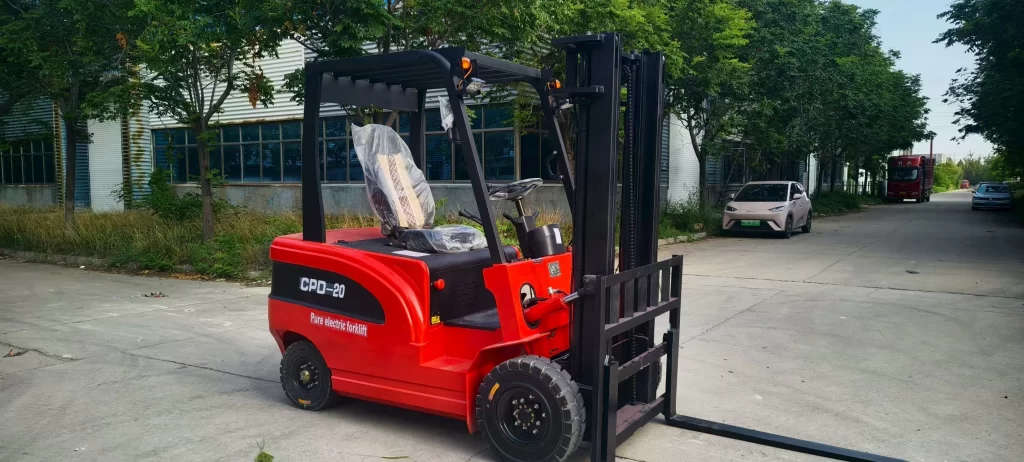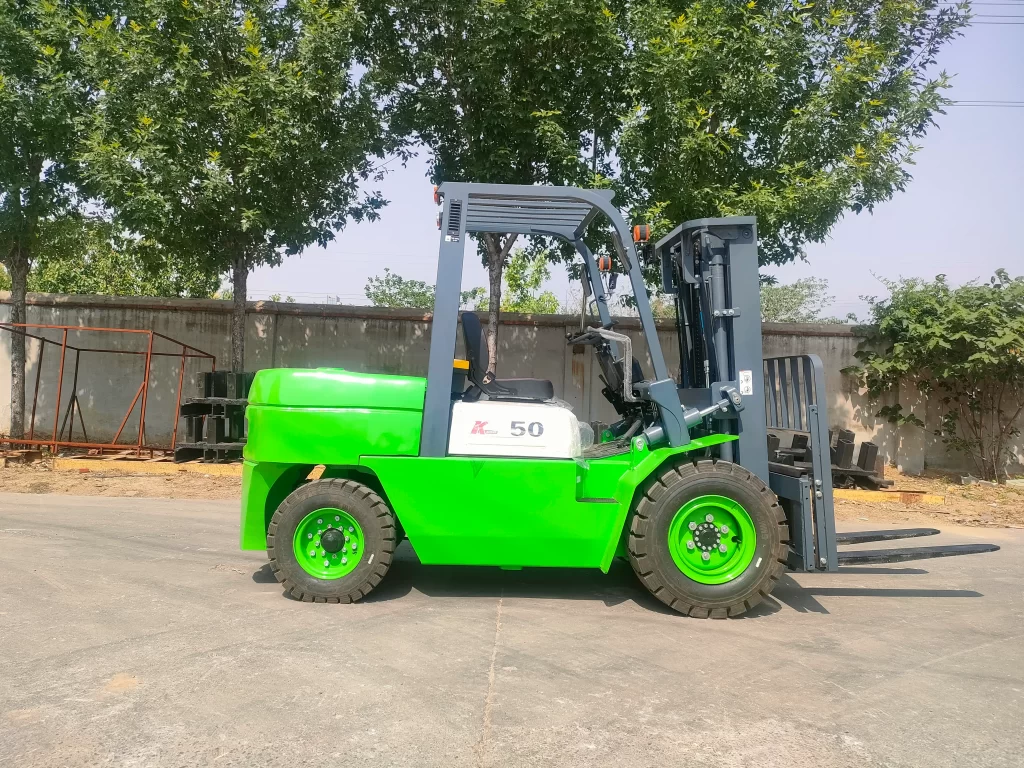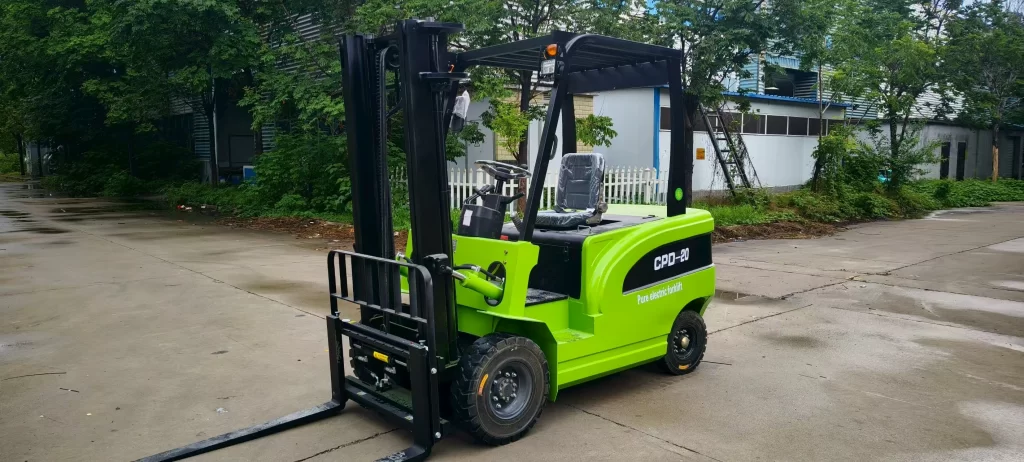What are the precautions for charging electric forklifts? Operating procedures for charging battery-powered forklifts
Abstract: Forklifts are essential tools in the logistics and warehousing industries. With the increasing use of electric forklifts, which are environmentally friendly, efficient, and cost-effective, regular charging is necessary. Typically, charging involves connecting the positive terminal of the charger to the electric forklift, selecting the appropriate charging mode and duration, and waiting for the charging process to complete. During charging, it is important to choose an appropriate charging environment, avoid overcharging or over-discharging, and promptly check the output power of the charging equipment. Let’s take a look at the charging procedures for electric forklifts and the precautions for charging electric forklifts.
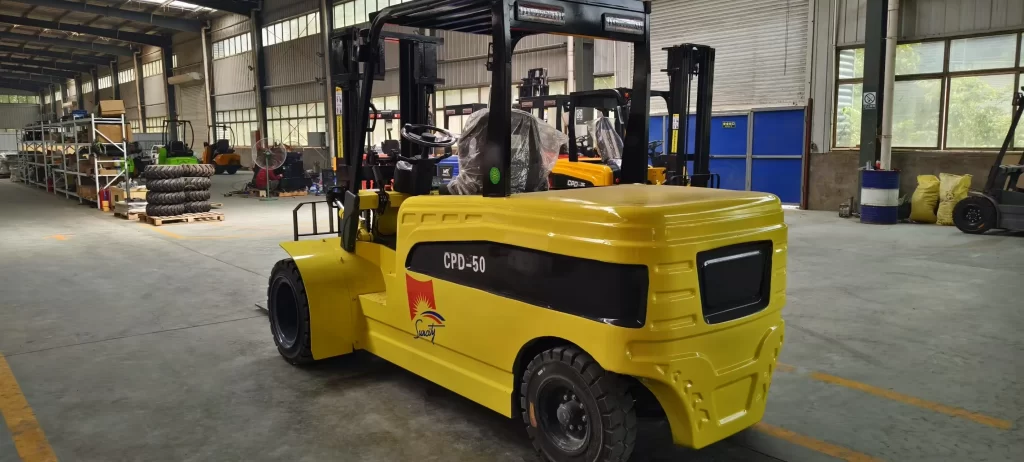
1. Electric forklift truck Charging Procedures
Electric forklifts, also known as battery-powered forklifts, are increasingly favored by the logistics and warehousing industry due to their environmental friendliness, efficiency, and flexibility. They are also highly popular in overseas markets. After over 40 days of sea transport, how should customers use the machine upon receipt? First, it is essential to charge the battery promptly upon receiving the goods to prevent prolonged discharge, which can lead to reduced battery performance or even machine malfunctions. What should be done if discharge occurs? Follow professional methods and steps to reactivate the battery. You may also contact us promptly, and we will provide a solution. Additionally, when using electric forklifts, proper charging is crucial. The specific charging procedure is as follows:
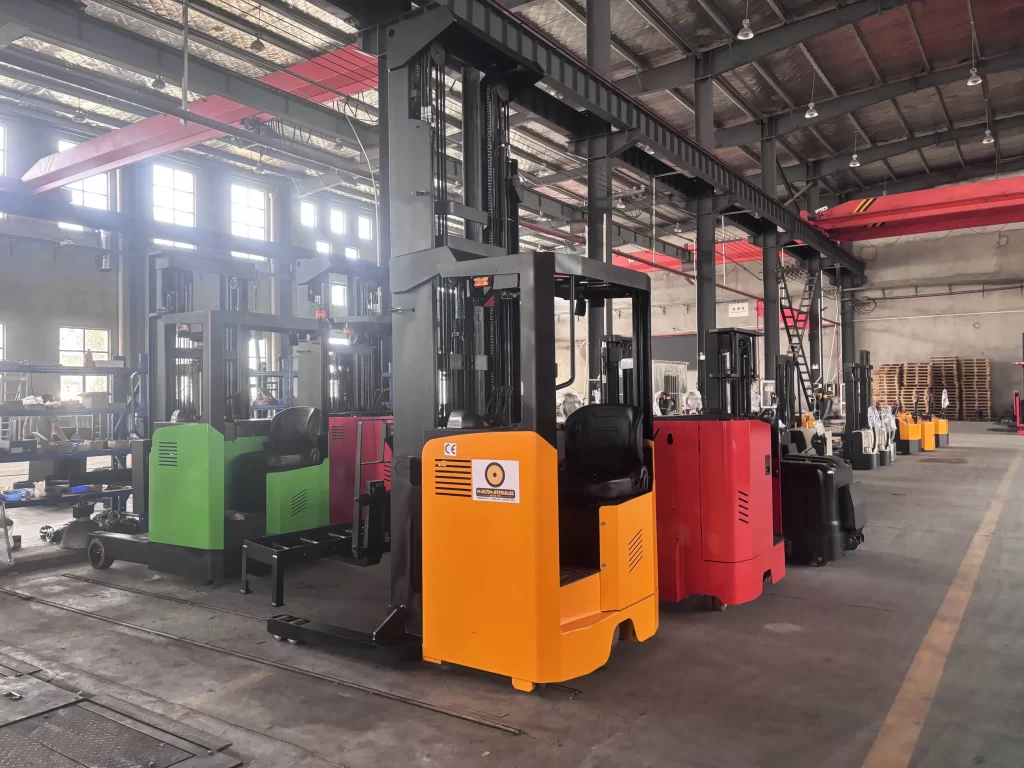
1) Pre-charging inspection
Before charging, thoroughly inspect the charger and battery of the equipment. Ensure the charger matches the machine’s charging power requirements. Second, verify the charger is intact with no deformation or damage. Third, check the charging port for cleanliness; if there is dirt or residue, wipe it clean with a dry cloth.
2) Charging port connection
The charging port of the lift truck is typically located on the left or right side of the vehicle. Before connecting the charging port, ensure that the dust cover has been removed. Then, connect the positive terminal of the charger to the positive terminal of the battery, and the negative terminal of the charger to the negative terminal of the battery. After confirming the connection is correct, proceed to the next step. Finally, confirm that the charging plug complies with your country’s voltage standards and socket specifications. Our electric forklifts support custom voltages ranging from 110V to 380V and various plug types.
3) Forklift Charging Operation
Select the appropriate charging mode and charging time based on the CPD model and battery capacity. Generally, electric vehicles require longer charging times, so it is important to plan the charging time and location in advance. During charging, the charger may generate heat, which is a normal phenomenon. Therefore, it should be placed in a clean, open area for charging. However, if abnormal heating is detected, charging should be immediately stopped and inspected to prevent fire hazards. Additionally, charging should not be performed in humid environments or during rainy weather to avoid electrical short circuits.
4) Charging Completion
Once charging is complete, the charger will automatically shut off or display a full charge status. At this point, disconnect the charger from the battery first, then disconnect the charger from the power source. After unplugging the power source, store the charger in a dry, well-ventilated area.
2. What Are the Charging Precautions?
When charging electric forklifts, there are many precautions to take. Proper charging is crucial for ensuring the safe and efficient operation of the equipment. What precautions should be taken when charging electric forklift batteries?
1) Warehouse electric forklifts should be parked in a well-ventilated area for charging, avoiding high-temperature, humid, or odorous environments. Additionally, ensure the charging environment temperature is within the appropriate range, generally between 0°C and 40°C.
2) Electric forklift batteries require regular charging to ensure normal operation. During the charging process, ensure the safety of the charger and battery to prevent accidents.
3) Battery charge levels directly impact vehicle performance. During use, battery usage time and charging frequency should be scheduled according to actual needs. Avoid situations where the battery charge is too low or too high. For batteries not in use for extended periods, charge and discharge them at least once a month to maintain battery health. Many of our friends have purchased a second set of batteries. When maintaining the batteries, please pay attention to this matter. Additionally, when the battery charge is insufficient, charge it promptly; when the battery charge is too high, discharge it promptly to maintain the battery’s healthy state.
4) During charging, it is important to monitor the output power of the charging equipment to prevent overloading or overheating. After charging is complete, disconnect the power cord promptly to avoid the risk of fire.
5) Both the vehicle charger and battery require regular maintenance and inspection. It is recommended to inspect and maintain the battery every three months and the charger every six months during use. During maintenance, keep hands dry to prevent electric shock incidents. Additionally, follow the maintenance manual to avoid damaging the battery and charger.
3. How long should an electric forklift truck be charged for?
The battery of an electric forklift is a lead-acid battery, with a typical charging time of approximately 8–10 hours. The exact time depends on the battery capacity and charger model. Avoid overcharging, as this can cause the battery to lose water, overheat, and reduce its lifespan. We are a professional manufacturer of electric forklifts, offering customization services for forklifts, including but not limited to customization of fast-charging forklift chargers (with a charging time as short as 4 hours), high-capacity batteries, and color/logo customization. Our forklifts use high-quality maintenance-free lead-acid dry batteries, which are convenient for daily maintenance and have a long service life of approximately 5 years; we also support customization of lithium-ion battery electric forklifts, utilizing lithium iron phosphate batteries and CATL cell technology.
